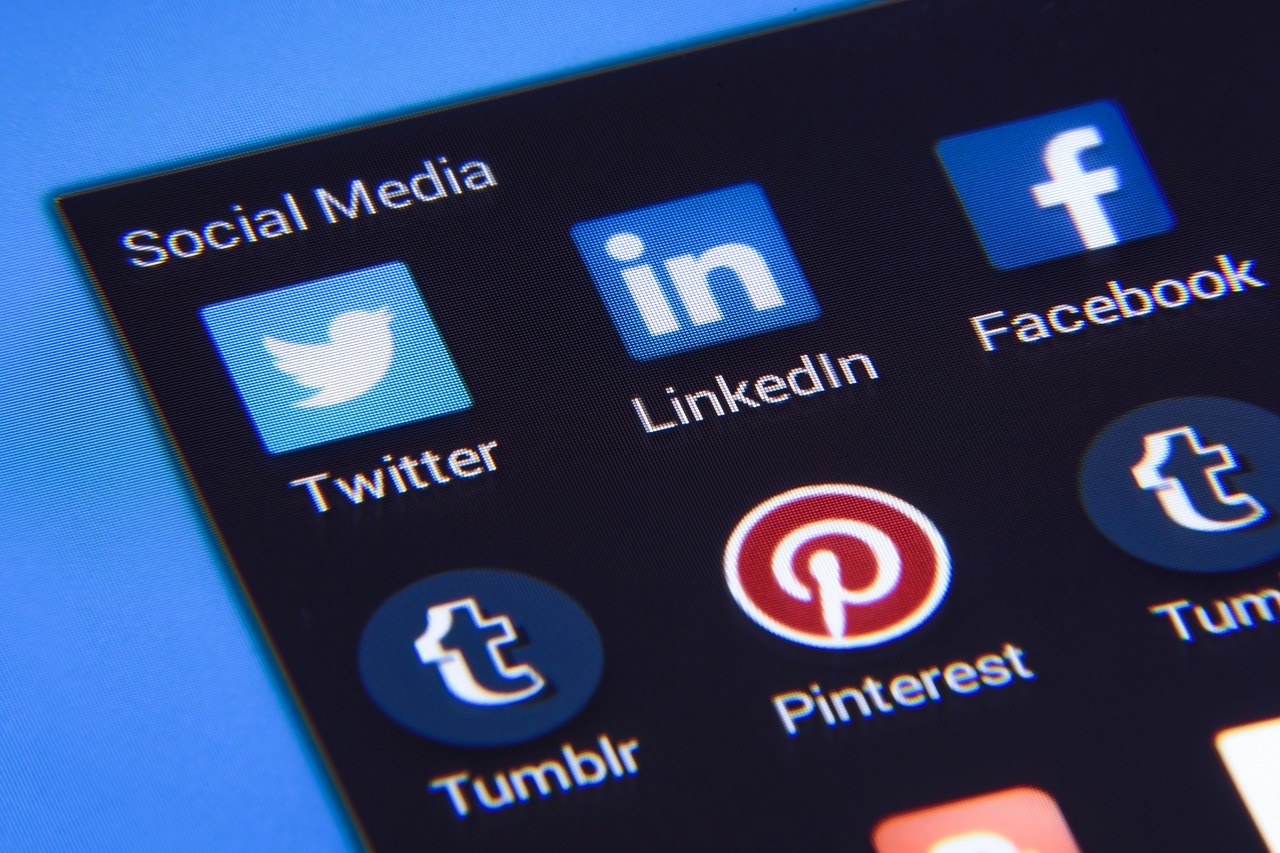Contents
What is Organic Advertising? [Organic Marketing Guide]
Organic marketing or organic advertising can essentially be defined as any type of advertising that is not paid for.
Organic advertising has mostly become associated with social media, but it involves much more advertising efforts than that, for example, SEO.
Amongst other things, organic advertising is what you publish in your or your company’s various social channels. It can be posts on a Facebook page, images or videos on an Instagram account, Tiktok clips, or YouTube films. The important thing is that the content is available for your followers and you have not paid for its reach. Instead, you hope and trust that your followers should like, share and/or comment on your content and that it spreads organically.
The benefit of organic advertising is that it is essentially free. A precondition for organic marketing is content in one way or another. It can be a video, a photo, or an article, amongst other things. But to make things more complicated, the content does not have to be created by you. Organic advertising can also come in the form of reviews and recommendations about your business by customers who share their experience with your company on social media and even recommends you.
Why you should leverage organic marketing in social media
When you market your social media business with content, you create an opportunity to reach people and create exposure for your brand.
Social media is the digital equivalent of reviews and it basically happens all the time. You can’t sit and wait for someone to buy your product or service and then tell their friends about their experience.
If you are active on social media, you can remind people who like your brand to share why they like it and maybe share a post and spread their appreciation to their friends and family. If you take good care of your followers and customers, they will do half the job for you.
Organic reach (organic advertising) can be calculated in many different ways. In many cases, it is defined as the number of unique users who see your content without paying to reach it further through advertising, paid ads, or sponsored posts
For example, it can be a Facebook post, YouTube video, Instagram post, or Pinterest Pin. If anyone visits your social profile by searching in social media or another free source, this also counts as organic advertising.

What is organic advertising?
Organic advertising, organic reach, and organic marketing are essentially different terms for the same thing. Usually, most people think about social media when the topic of organic marketing is discussed, but it can be so much more. With a wide definition, organic advertising can be described as all of the marketing activities that you do not pay for. With a slimmer definition, it can be described as all of the exposure and reach that you receive on social media without paying for it. This may include the organic reach you receive through your own posts on social media and the organic reach you receive with them, but it may also involve things like your customers’ social media posts where they talk about your business.
With a wider definition, organic advertising may include:
- SEO: getting organic reach and traffic to your website via Google and other search engines without paying for it
- Posts on social media that allow you to reach your audience
- Email marketing where you don’t pay to reach people
- Recommendations and reviews from existing customers
How do I reach people with organic posts on social media?
There is no secret that sponsored posts and ads are taking over social media. You don’t even need to scroll for a minute in your feed for an ad to appear. Paid advertising in social media helps brands increase their exposure and to boost sales. Can companies still reach an audience through organic posts? The answer is yes! Organic posts are important for a variety of reasons. There is an opportunity for your business to create a relationship with your customers by showing them content they want to see. For example, blog posts, guides, images, movies, and valuable information. It is about creating content that is so valuable that people actively seek up your content rather than you seeking them up.
Tips to increase the organic reach on social media
Create a content strategy. A content strategy is a strategy for how you will promote your company on social media. It is your strategy with which content is to be published on your various social channels.

Focus on what is valuable for your followers
Talk to your audience. Create content that is relevant and interesting for your followers.
Combining both organic content and sponsored content is the best mix for your marketing strategy online.
Paid marketing is good to reach a wider audience and drive traffic very quickly, but it requires you to have a marketing budget, and if you are just a startup company, your marketing budget may be limited. With this in mind, organic advertising on social media is a great opportunity that was not possible back in the day for companies.
Organic reach is very good for creating a relationship with your customers and building trust in your brand.
Many marketers think it is becoming more difficult to get an impact on social media without paid advertising. And it is true that the organic reach is decreasing on social media as a result of an increased amount of content and new algorithms that decide how content is displayed in people’s feeds.
But this is primarily true for Facebook, and to an increasing extent even on Instagram. But the good news is that there are far more social media platforms than that. But the good news is that there are plenty of social media platforms that you can use to reach a larger audience organically via organic marketing strategies.
To succeed with organic advertising on social media, examine different social media networks and try to understand what your target audience is interested in. By doing this, you should be able to achieve a greater impact on social media. We will still use advertising to a great extent, but more because it is a better way to identify and reach a selected group than to reach the ones who follow us.
The starting point itself is to understand what, for example, Facebook prizes and prioritizes, and then act on the basis of it. We can do this by looking at what we know about their algorithms.
Increase organic advertising on social media
First of all, when it comes to organic reach and leveraging algorithms on social media to get more organic reach, the basis is quality content.
When it comes to Facebook, video or images should be posted directly on Facebook instead of being generated via links and live broadcasts. Links, click fishing content, writing “free” or asking the recipients “Like and share” will have a negative effect on organic reach. In addition, using the same content over and over will have a negative effect on your organic reach.
When it comes to the rank signals on social media, things like up-date topics and trends are always positive things. To have followers who regularly interact with content, and preferably discuss with each other in the comment field is also good. And to make content in formats that users like – preferably video or images are a great idea.
From this, we can learn several things about what can provide better organic reach on Facebook. Some of these tips are equally valid for Instagram, LinkedIn, and Twitter:
1. Video is one of the best types of content
Video is the format that grows fastest on social media. You can take advantage of the big boom and popularity of video content on social media to get a greater organic reach, but of course only if you do create appealing and interesting content that people care about.
Posting directly means that you should not add the video on YouTube and then link from there to other social media. Most social media platforms favor content that is posted directly on their platform as it keeps their users on the platform.
In addition, you also need to make videos in the right dimensions that are optimized for each social channel and of course have a good story that quickly grabs the viewer. This applies to all social media.
2. Live video is prioritized
Live video has exploded in popularity in recent years, and with that said, you really want to take advantage of it.
Broadcasting live video provides greater engagement according to Facebook, and it means greater organic reach for you. Many social media platforms have incorporated live streaming functions into their platforms, for example, Facebook, Instagram, and even Twitter. There are many ways in which you can leverage live video on social media for organic reach, so be creative!

3. Avoid links
For many companies and organizations, social media is a place where you post links with the goal of getting your audience over to your own website. This can work sometimes, but the fact is that social media networks have no interest whatsoever in helping you move their users to your own platforms. As a result, they won’t favor this type of content.
So instead of posting a link, create content that your followers can interact with there and then on the same theme. Another method that works on LinkedIn is to post the link as a comment.
If you still want to post links, make sure it is not the only thing you do. Create a mix of different kinds of content types, video, live, pictures, slideshows, etc, if you do this in a good way it can mean that you still get visibility even for your links.
4. Understand what your audience likes
The foundation for effective organic advertising is understanding what types of content your audience likes and then optimizing your content strategy accordingly.
With social media content, you get information n real-time. From the time you publish a post somewhere, there is pretty soon statistics on how it has been received by your audience in the form of likes, comments, shares, and more
You can then utilize this knowledge to create even more successful content on social media. For example, by making powerful ads that create leads and more sales.
The myth that organic marketing is dead is a myth
In recent years, there has been a growing belief that organic advertising is dead and that the only thing that works if you want to reach your target audience in this competitive landscape is paid advertising.
But the fact of the matter is that this couldn’t be further from the truth. For example, SEO is larger than ever, and websites are getting more organic traffic than ever.
Firstly; Yes it is difficult to reach out organically in social media today – without the right strategy. Also, a good social media strategy should also include a plan and budget for advertising. In other words, to succeed with marketing, you should have both paid and organic advertising. You should not rely on just one or the other.
But to conclude, organic marketing in social media or as a whole is certainly not dead and yes, you need to spend time and resources on it. But the key to a successful organic advertising strategy is also adapting and changing your efforts based on what works. If the interest in Twitter suddenly dies, for example, you need to find a new channel and platform on which your target audience spends their time and where you can reach them.
Organic reach vs. paid advertising
Organic reach of content refers to the reach of content that takes place via your network when people share, like, comment, or otherwise engage with something you put up for free. The more people pay attention to the content, the more visibility it has.
Continuous changes in social media algorithms have made us see more and more posts of private individuals and fewer companies.
It’s not just Facebook that has limited organic reach. Almost all social media has followed suit while raising prices for advertising.
Why is advertising more efficient?
A common misconception is that organic reach is more effective than advertising due to organic reach being considered more “personal” or “authentic”. But the truth is that advertising is more efficient than organic spread. Why?
Advertising leads to better conversion – with advertising you have easier to reach the right person at the right time.
Test, hone, and implement
It is extremely important to ensure that your content is well-optimized, relevant, and adapted for your target audience.
Organic content gives you a chance to test your content and your strategy for free before investing money in advertising. This is just one of many ways paid and organic marketing can complement each other.
You probably already have a certain amount of followers. Use them to listen, collect data, measure, optimize and hone your content before posting an ad to spread your content. It is strategically smart and guarantees better ROI (Return of Investment, or return on your investment).
Organic reach is good for testing engagement, and building trust in existing customers.
Now that you know how to test yourself, there is a thing you have to figure out before you beat your strategy on social media: What platform does your target audience use?

Where do your customers hang out?
It is important to keep track of which social media platforms work for your company’s marketing and business goals.
According to a Hubspot report from 2017, the three main platforms within the B2B space were Facebook, Linkedin, and Twitter. Also, Instagram ranks high on the list, and it is becoming increasingly popular for companies to reach their audience!
Until the year 2014, it was relatively easy for companies to reach their customers via organic reach on Facebook. But since then, the organic reach of content has dropped.
Due to Facebook’s decrease in organic reach, the organic reach does not look very positive for the future.
According to experts, the number of impressions for organic content will be close to zero in the future.
A study by buffer (2015) showed that organic spread can reach 20% of one’s followers on LinkedIn. At best, this percentage can rise up to 60 if you put out content on the platform at least 20 times a month – and high-quality such.
The same as Facebook is Linkedin’s marketing platform advanced. Microsoft purchased LinkedIn a few years ago, and after that, the platform developed a large number of new features. The new features are specifically aimed at making B2B marketing more efficient via advertising.
If you are not already investing in LinkedIn, you should do it this year! Organic reach works better on LinkedIn than many other social media platforms as well, but it can also be worth testing your advertising strategies for even better results.
In 2017, Twitter focused on increasing its user length but failed to achieve the goal. The focus on users also led to Twitter did not have time (or money) to improve its platform for marketing. Twitter pulled down on costs in almost all other areas in addition to an increase in user length to save money.
Twitter has a limited organic reach compared to Facebook but is considered a pay-to-play platform because it is primarily paid advertising that can provide significant results for marketers.
There are varying opinions on how it will go for Twitter in the future, and if it is worth it to put money and resources into the platform.
Some argue that Twitter slowly keeps dying out. Others are more positive and believe that Twitter is still a good place to create relationships with potential customers.
It is also important to think that the popularity of Twitter is not equally popular in different regions and countries, which is why you need to carefully study and review your target audience to see which platforms work best for you and your needs.

Many may think that Instagram is mainly a B2C platform, but in recent years, it has actually shown great potential also for B2B marketing.
Instagram is growing faster than ever: At the end of 2017, it reported that it had 800 million users, which means that it grew by 200 million users during the previous year.
At the same time, the number of company profiles on the platform is explosively growing: only between July and November 2017 grew from 15 million to 25 million. 200 million users visit these company profiles daily.
Instagram’s algorithm partially reflects Facebook’s, as Instagram is owned by Facebook. Organic reach has not been limited to the same extent, but as the competition is growing, so is the limitation of the organic reach
In 2016, the feed on Instagram was changed from being shown in chronological order to the algorithm that determines what individual users see. What you look at is based on one’s preferences, in the way that Instagram’s algorithm perceives it.
For most companies, Instagram is still relevant as a marketing platform.
The competition to appear on Facebook, Twitter, and Instagram feeds is becoming increasingly tougher, and therefore, paid marketing is becoming more important. It is important to develop a powerful and clear strategy to achieve the best results organically.
That said, use organic content to test the best way to create engagement. While Facebook, Twitter, and Instagram are increasingly becoming “pay-to-play” platforms, you can still see positive results through organic reach on LinkedIn.
Facebook is the giant of social media, but marketing on LinkedIn is considered one of the most cost-effective. Twitter’s future is relatively unclear, while Instagram continues to grow and attract increasingly business to the platform.
Remember, that the most important part of organic advertising is to continue to create content that stands out: relevant, interesting content that is well-written and answers your customers’ needs.
Talk to your target audience – and engage it
Many companies and organizations are still notoriously poor in interacting on social media. They post but do not respond to comments. The content on social media should be seen as an invitation for dialogue. Take every opportunity you can to engage and interact with your target audience to build customer relations. This is actually one of the most effective organic advertising strategies.
Keep it genuine
Be authentic and genuine with your audience on social media and share content that is really important to those you want to reach, and in a way that allows them to quickly decide whether to stay or move on. This is also why it is so important to understand what our target group actually wants.
Commonly asked questions
What do you mean by organic ads?
Organic ads refer to advertising methods that do not involve the use of the paid promotion. Organic ads rely on natural or “organic” means of promoting a product or service, such as word-of-mouth recommendations, search engine optimization (SEO), and social media marketing.
Search engine optimization (SEO) is one of the most common forms of organic advertising. This method involves optimizing a website and its content to rank higher in search engine results for relevant keywords. This can be achieved through the use of relevant keywords, high-quality content, and good website design.
Social media marketing is another popular form of organic advertising. This method involves creating and sharing content on social media platforms that will be of interest to the target audience. The goal is to build a following, increase engagement, and ultimately drive more traffic to a website or product page.
Word-of-mouth recommendations, which is the most traditional form of advertising, can also be considered as organic advertising. This happens when someone shares their experience with a product or service with others, and this is considered one of the most powerful forms of advertising as it is based on trust.
Organic advertising differs from paid advertising in that it does not require an investment in paid promotion. Instead, it relies on the natural spread of information and word-of-mouth recommendations to reach potential customers. While it may take longer for organic advertising to produce results, it can be a cost-effective way to reach a target audience.
How do you advertise organically?
There are several ways to advertise organically:
- Search Engine Optimization (SEO): Optimize your website and its content to rank higher in search engine results for relevant keywords. This can be achieved through the use of relevant keywords, high-quality content, and good website design.
- Social Media Marketing: Create and share engaging and informative content on social media platforms that will be of interest to your target audience. The goal is to build a following, increase engagement, and ultimately drive more traffic to your website or product page.
- Content Marketing: Create valuable and informative content that addresses the needs of your target audience. This can include blog posts, videos, infographics, or other types of content that will help establish your business as a thought leader in your industry.
- Influencer Marketing: Partner with influencers in your industry to promote your products or services. Influencers have a large following, and their endorsement can be a powerful way to reach a new audience.
- Email Marketing: Build an email list of potential customers and send them targeted and personalized messages.
- Referral Marketing: Encourage current customers to refer friends and family to your business. This can be done through referral programs or by offering incentives for referrals.
- Community Building: Building a community around your brand or product can be a powerful way to organically reach new customers. This can be achieved through social media groups, forums, or in-person events.
- Public Relations: Leverage public relations to secure coverage in relevant publications and increase brand awareness.
Organic advertising requires effort and patience. It may take longer for organic advertising to produce results, but it can be a cost-effective way to reach a target audience.
Why is organic marketing good?
Organic marketing is good for a number of reasons:
- Cost-effective: Organic marketing does not require any direct financial investment, making it a cost-effective way to promote a product or service.
- Sustainable results: Organic marketing generally takes longer to see results, but the traffic and engagement gained is often more sustainable, as it is based on building relationships and providing valuable content to the audience.
- Building trust and credibility: Organic marketing methods, such as SEO and content marketing, allow a business to establish itself as an authority in its industry, which can lead to building trust and credibility among its audience.
- Long-term impact: Organic marketing efforts, such as SEO, can have a long-term impact on a business’s online presence and search engine ranking, which can lead to an increase in organic traffic and sales over time.
- Better targeting: Organic marketing allows for better targeting of the audience, as it’s based on building relationships, understanding the audience’s needs, and providing them with valuable content, which in turn can lead to more engagement, brand loyalty, and customer retention.
- Increased brand awareness: Organic marketing can increase brand awareness by reaching a wide audience, which can lead to more potential customers and increased sales.
Overall, organic marketing is good because it’s cost-effective, sustainable, and helps to build trust, credibility, and long-term impact for the brand.
Why is organic marketing better?
Organic marketing is often considered better than paid marketing for a number of reasons:
- Cost-effective: Organic marketing does not require any direct financial investment, making it a cost-effective way to promote a product or service.
- Sustainable results: Organic marketing generally takes longer to see results, but the traffic and engagement gained is often more sustainable, as it is based on building relationships and providing valuable content to the audience.
- Building trust and credibility: Organic marketing methods, such as SEO and content marketing, allow a business to establish itself as an authority in its industry, which can lead to building trust and credibility among its audience.
- Long-term impact: Organic marketing efforts, such as SEO, can have a long-term impact on a business’s online presence and search engine ranking, which can lead to an increase in organic traffic and sales over time.
- Better targeting: Organic marketing allows for better targeting of the audience, as it’s based on building relationships, understanding the audience’s needs, and providing them with valuable content, which in turn can lead to more engagement, brand loyalty and customer retention.
- Increased brand awareness: Organic marketing can increase brand awareness by reaching a wide audience, which can lead to more potential customers and increased sales.
- Higher ROI: Organic marketing can generate a higher return on investment (ROI) because it is cost-effective and has a long-term impact. The brand awareness and trust built through organic marketing can also lead to increased sales and customer loyalty over time.
- Greater audience engagement: Organic marketing can lead to greater audience engagement, as it is focused on providing valuable content and building relationships with the audience. This can lead to higher conversion rates and greater brand loyalty.
- Greater control over the message: Organic marketing provides businesses with more control over their message, as they can create and share content that aligns with their brand values and messaging.
Overall, organic marketing is often considered better because it is cost-effective, sustainable, and can lead to greater brand awareness, trust, and long-term impact.
How do you create an organic marketing strategy?
Creating an organic marketing strategy involves several steps:
- Define your target audience: Understand your target audience’s demographics, interests, pain points, and where they spend their time online. This will help you create content and campaigns that are relevant and appealing to them.
- Identify your goals: Determine what you want to achieve with your organic marketing efforts. This can include increasing website traffic, generating leads, boosting conversions, or building brand awareness.
- Conduct a content audit: Review your current content and identify gaps in your content strategy. This will help you determine what type of content is missing and what type of content is resonating with your audience.
- Create a content calendar: Plan out your content in advance. This will help you ensure that you are consistently creating and publishing high-quality content.
- Optimize your website for search engines: Ensure that your website is optimized for search engines, including having a responsive design, fast load time, and implementing SEO best practices.
- Invest in SEO: Utilize search engine optimization (SEO) techniques to improve your website’s visibility and search engine ranking. This includes keyword research, meta tags, and backlinks.
- Utilize social media: Utilize social media platforms to engage with your audience, promote your content, and drive traffic to your website.
- Leverage influencers: Collaborate with influencers in your industry to help promote your brand and reach a wider audience.
- Measure and analyze: Track your progress and analyze your results. Use tools such as Google Analytics to measure website traffic, conversions, and engagement.
- Continuously improve: Use the insights gained from step 9 to continuously improve your organic marketing strategy.
What is the difference between organic marketing and paid marketing?
| Organic Marketing | Paid Marketing |
|---|---|
| Organic marketing is the process of gaining traffic or attention through unpaid means. | Paid marketing is the process of promoting a product or service through paid advertising. |
| Examples of organic marketing include SEO, content marketing, and social media marketing. | Examples of paid marketing include pay-per-click (PPC) advertising, display advertising, and sponsored content. |
| Organic marketing generally takes longer to see results, but the traffic and engagement gained are often more sustainable. | Paid marketing can produce faster results, but the traffic and engagement gained is often temporary and stops once the advertising campaign ends. |
| Organic marketing is less predictable and controllable. | Paid marketing is more predictable and controllable, as you can set specific goals and budgets for the campaign. |
| Organic marketing is cost-effective as it does not require any direct financial investment. | Paid marketing requires a direct financial investment, but it can be more cost-effective in the long run if the campaign is well-planned and executed. |






